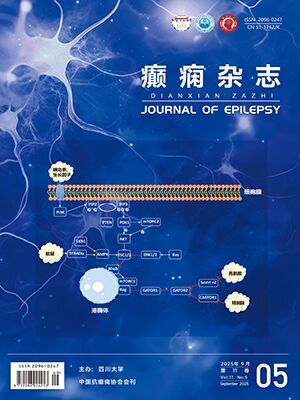| 1. |
Chen DK, So YT, Fisher RS. Use of serum prolactin in diagnosing epileptic seizures: report of the therapeutics and technology assessment subcommittee of the american academy of neurology. Neurology, 2005, 65(2): 668-675.
|
| 2. |
Wyllie E, Lueders H, Pippenger C, et al. Postictal serum creatine kinase in the diagnosis of seizure disorders. Arch Neurol, 1985, 42(11): 123-126.
|
| 3. |
Brigo F, Igwe SC, Erro R, et al. Postictal serum creatine kinase for the differential diagnosis of epileptic seizures and psychogenic non-epilep-tic seizures: a systematic review. J Neurol, 2015, 262(7): 251-257.
|
| 4. |
Yanagawa Y, Nishi K, Sakamoto T. Hyperammonemia is associated with generalized convulsion. Intern Med, 2008, 47(6): 21-23.
|
| 5. |
Liu KT, Su CS. Postictal transient hyperammonemia. Am J Emerg Med, 2008, 26(10):388.e381-382.
|
| 6. |
Liu KT, Lee CW, Yang SC, et al. Postictal transient hyperammonemia as an indicator of seizure disorder. Eur Neurol, 2010, 64(4): 46-50.
|
| 7. |
Hung TY, Chen CC, Wang TL, et al. Transient hyperammonemia in seizures: a prospective study. Epilepsia, 2011, 52(4): 2043-2049.
|
| 8. |
Tomita K, Otani N, Omata F, et al. Clinical significance of plasma ammonia in patients with generalized convulsion. Intern Med, 2011, 50(10): 2297-2301.
|
| 9. |
Berg AT, Berkovic SF, Brodie MJ, et al. Revised terminology and concepts for organization of seizures and epilepsies: report of the ILAE Commission on Classification and Terminology, 2005-2009. Epilepsia, 2010, 51(4): 676-685.
|
| 10. |
Dhiman V, Sinha S, Rawat VS, et al. Semiological characteristics of adults with psychogenic nonepileptic seizures (PNESs): an attempt towards a new classification. Epilepsy Behav, 2013, 27(2): 427-432.
|
| 11. |
Banister EW, Cameron BJ. Exercise-induced hyperammonemia: peripheral and central effects. Int J Sports Med, 1990, 11(Suppl.2): 129-142.
|
| 12. |
Ristic AJ, Draskovic M, Bukumiric Z, et al. Reliability of the witness descriptions of epileptic seizures and psychogenic nonepileptic attacks: a comparative analysis. Neurol Res, 2015, 37(4): 560-562.
|
| 13. |
Cooper AJ. The role of glutamine synthetase and glutamate dehydrogenase in cerebral ammonia homeostasis.Neurochem Res, 2012, 37(01): 2439-2455.
|
| 14. |
Albrecht J, Norenberg MD. Glutamine: a Trojan horse in ammonianeurotoxicity. Hepatology, 2006, 44(2): 788-794.
|
| 15. |
During MJ, Spencer DD. Extracellular hippocampal glutamate andspontaneous seizure in the conscious human brain. Lancet, 1993, 341(4): 1607-1610.
|
| 16. |
Medina-Ceja L, Pardo-Pena K, Morales-Villagran A, et al. Increase inthe extracellular glutamate level during seizures and electrical stimulation determined using a high temporal resolution technique. BMC Neu-rosci, 2015, 16(4): 11.
|
| 17. |
Tsacopoulos M, Poitry-Yamate CL, Poitry S. Ammonium and glutamate released by neurons are signals regulating the nutritive function of a glial cell. J Neurosci 1997, 17(8): 2383-2390.
|




